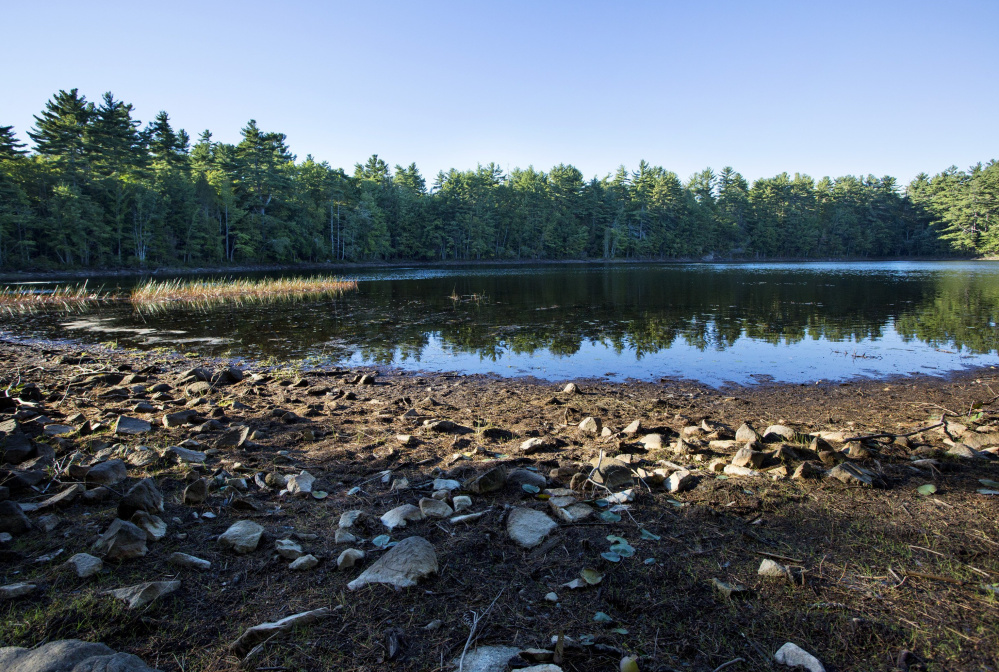AUGUSTA — Maine officials might consider calling a state of emergency if drought conditions continue to worsen, Maine’s emergency management director said Thursday during a meeting of the state’s Drought Task Force.
With the exception of Aroostook County, all counties in Maine have experienced lower-than-normal precipitation since April, according to a member of the National Weather Service, and dry conditions continued in September. The forecast is calling for drier, warmer-than-normal weather for October and beyond.
“The drought is expected to continue and expand,” said Tom Hawley of the weather wervice in Gray. “September rainfall was well below average for the entire state. Many locations in southern Maine received less than one inch for the month.”
Groundwater levels for most of Maine are lower than they’ve been in 11 to 35 years, according to the U.S. Geologic Survey. The southern two-thirds of the state has experienced particularly dry conditions.
“We’re not yet in a state of emergency, but if conditions continue to worsen, we may have to consider (declaring a state of emergency),” Bruce Fitzgerald, director of Maine’s emergency management agency, said in a news release after the meeting.
Before doing so, Fitzgerald said, the state would collect more data from agencies such as the Maine Drinking Water Program, the Public Utilities Commission and the Department of Agriculture to determine the full impact on drinking water supplies, farms and other resources.
“We know that it’s very dry and we know that it looks like the weather forecast isn’t going to improve anytime soon, but I don’t think we have a true picture of the issues around the state,” Fitzgerald said.
The state housing authority announced Thursday that it will make $250,000 available to income-eligible families whose potable drinking water is seriously affected by the drought.
“Funds are limited and are available on a first-come, first-serve basis to help those households with an immediate need for relief,” the agency wrote in a news release. “Funds will be used for well repair, replacement or recovery measures only for those homes for which the lack of potable water is due to the recent drought. Affected households can contact their area community action agency to determine their eligibility.”
A list of community action agencies and telephone numbers is available at www.mainehousing.org, www.mainehousing.org, 211maine.org or by calling 211.
Some municipalities and districts around the state have imposed restrictions on how much water residents can use.
For now, however, the state task force has just recommended that people conserve water in a number of ways: taking shorter showers, not running water while brushing teeth or shaving, fixing leaky sinks and toilets, running full loads of laundry and dishes, avoiding peeling vegetables under running water, discontinuing outdoor watering unless absolutely necessary, and using as little water as possible when washing cars.
“Although conservation measures are voluntary at this point, it’s important that everyone take steps to conserve to help prevent worsening conditions,” Fitzgerald said.
A state of emergency is most often declared after severe weather such as hurricanes that cause widespread power outages, Fitzgerald said, but Gov. Paul LePage does have the authority to call one in a drought.
Before a state of emergency is called, officials would consider what legal authority they have and what aid the state or federal government would be able to provide, Fitzgerald said.
Send questions/comments to the editors.



Success. Please wait for the page to reload. If the page does not reload within 5 seconds, please refresh the page.
Enter your email and password to access comments.
Hi, to comment on stories you must . This profile is in addition to your subscription and website login.
Already have a commenting profile? .
Invalid username/password.
Please check your email to confirm and complete your registration.
Only subscribers are eligible to post comments. Please subscribe or login first for digital access. Here’s why.
Use the form below to reset your password. When you've submitted your account email, we will send an email with a reset code.